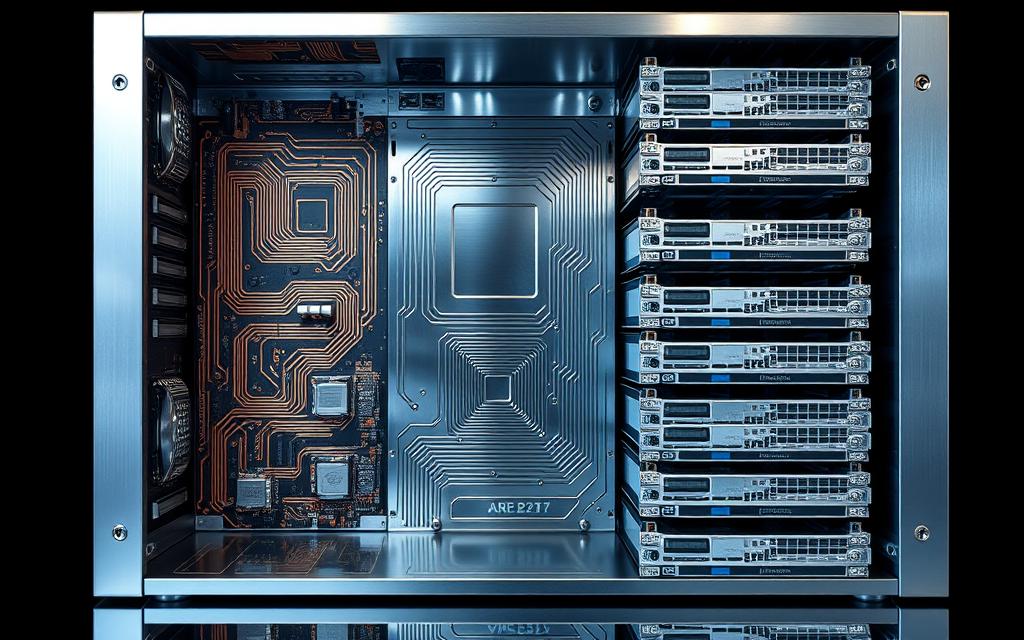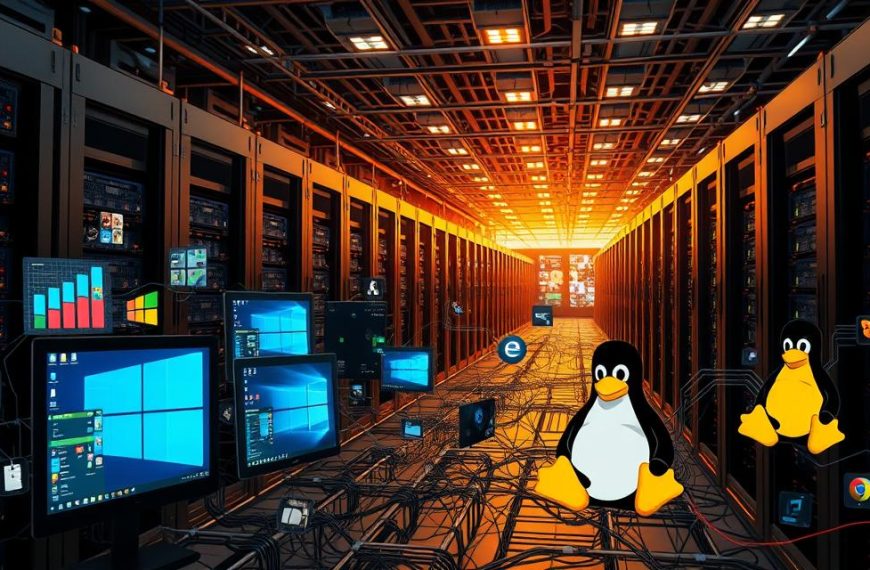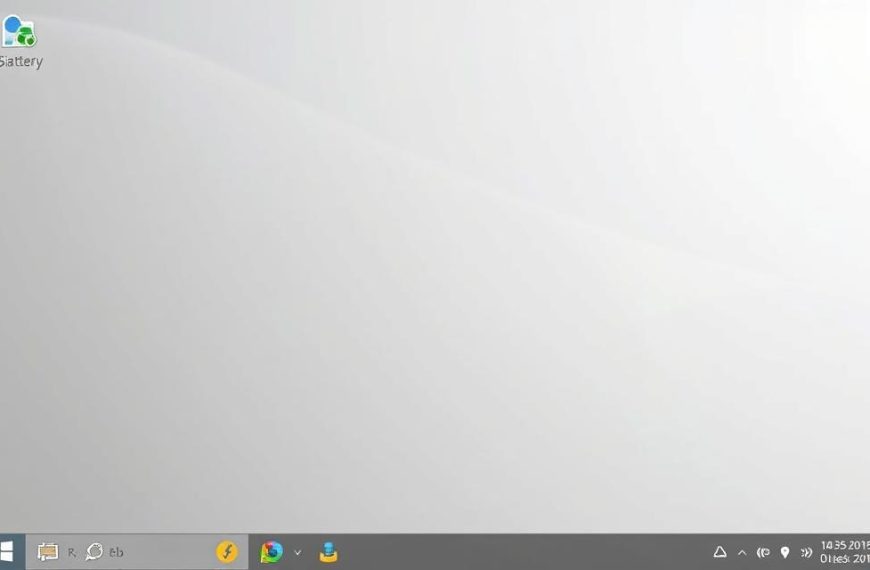Bare metal computing allows software to run directly on computer hardware. It bypasses the need for an operating system. This approach offers unique control over hardware resources1.
Developers explore bare metal programming to gain precise control over hardware. This method involves writing code that directly interacts with a computer’s physical parts1.
Bare metal computing isn’t just theory; it’s used in specialised environments. Researchers have successfully implemented it on various platforms. These include x86 laptops and ARM-based systems like the Raspberry Pi 31.
This approach creates ultra-efficient software solutions. It eliminates operating system overhead. As a result, programs can interact directly with hardware components1.
Bare metal programming continues to fascinate computer experts. It offers insights into how computer systems work. The method appeals to those seeking top performance and minimal complexity1.
Understanding Bare Metal Programming Fundamentals
Bare metal programming strips away layers of abstraction. It allows developers to interact directly with computer hardware. This approach offers unparalleled control and performance for specialised computing tasks2.
Bare metal programming involves code running directly on hardware. It’s a method of creating software that communicates precisely with the underlying computer architecture. No intermediate operating system is required.
What is Bare Metal Computing?
Bare metal computing lets software interact directly with hardware components. This approach eliminates resource sharing complexities2. It also enhances performance for data-intensive applications2.
Bare metal computing provides a dedicated single-tenant environment2. This feature offers unique advantages for specific computing needs.
- Elimination of resource sharing complexities2
- Enhanced performance for data-intensive applications2
- Dedicated single-tenant environment2
Basic Hardware Requirements
Successful bare metal programming requires specific hardware knowledge. Developers must understand processor capabilities and memory architecture. They also need to know about input/output interfaces.
- Processor capabilities
- Memory architecture
- Input/output interfaces
The essence of bare metal programming is complete hardware control and minimal software overhead.
The Role of Firmware
Firmware bridges hardware and software in bare metal systems3. It initialises hardware components and provides a foundation for applications. This enables deterministic behaviour for specific computing tasks3.
Bare metal programming benefits various industries. Gaming, aviation, and finance can process large data volumes efficiently. This approach offers exceptional performance and reliability2.
Can a Computer Run Without an Operating System?
Computers can operate without traditional operating systems. In early computing, machines performed single tasks through direct hardware interaction4. Users managed computations by manually connecting wires on plug boards4.
The BIOS enables basic computer operation without a full operating system. It manages features like clock resetting and voltage regulation4. However, a computer without an OS can only run one program at a time4.
- Direct hardware communication is possible
- Single-task execution is the primary limitation
- Basic firmware enables minimal computer functionality
Modern computing offers alternative booting methods. Users can start systems using USB drives, CD-ROMs, or SD cards5. To change boot devices, access the BIOS by pressing specific keys during startup5.
ARM-based Raspberry Pi shows that bare metal programming allows computers to run without traditional operating systems1. Developers can create specialised programs that interact directly with hardware, pushing the limits of computer functionality.
The Boot Process: From Power-On to Program Execution
The boot process is a vital sequence that brings a computer to life. It begins when electricity flows through the machine’s circuits6.
When powered on, a computer goes through essential steps to prepare for use. Two key systems manage this: BIOS and UEFI7.
BIOS and UEFI Initialisation
The firmware runs a Power-On Self-Test (POST) to check crucial hardware parts. This test examines the CPU, memory, and storage devices6.
Modern systems can complete this process quite swiftly. Startup times vary from seconds to minutes, depending on storage type7.
Boot Sector Loading
The Master Boot Record (MBR) is vital to the boot process. It’s found in the hard drive’s first sector8.
The MBR holds key details about partition structure. It helps identify the active bootable partition8.
Memory Management in Bare Metal
Memory management is a key challenge in bare metal programming. Developers must directly control memory resources without an operating system7.
This involves ensuring efficient allocation and use of system memory7.
| Boot Process Stage | Primary Function | Duration |
|---|---|---|
| POST | Hardware Component Check | Seconds |
| MBR Loading | Identify Bootable Partition | Milliseconds |
| Bootloader Execution | Prepare OS Loading | Seconds |
The boot process transforms raw hardware into a functional computing environment through a meticulously orchestrated sequence of initialisation steps.
Writing Your First Bare Metal Program
Bare metal programming involves creating low-level software that directly interacts with computer hardware. Developers can use assembly language or C programming for this purpose. Each language offers unique advantages for bare metal development.
Developing a bare metal program requires several key steps. These include selecting a hardware platform, choosing a programming language, and setting up the development environment. Writing and compiling the code are also crucial steps.
- Select an appropriate hardware platform
- Choose a programming language
- Set up the development environment
- Write and compile the code
The Raspberry Pi 4 is an excellent platform for learning bare metal programming. It boasts a powerful 1.5 GHz 64-bit quad-core Arm Cortex-A72 processor. This makes it ideal for low-level software development9.
| Language | Complexity | Performance |
|---|---|---|
| Assembly | High | Excellent |
| C Programming | Moderate | Good |
Cross-compilation is vital in bare metal programming. Developers must install tools like the Arm GCC compiler for Linux. Proper environment configuration is also necessary9.
For debugging, a USB to serial TTL cable provides valuable diagnostic capabilities9. This tool is essential for identifying and fixing issues in your code.
Remember, bare metal programming requires deep understanding of hardware interactions and patience in learning.
The recommended approach involves starting with a simple kernel for 32-bit x86 architecture. Create input files like boot.s and kernel.c. Follow the Multiboot Standard for seamless booting10.
Input/Output Operations in Bare Metal Computing
Bare metal computing requires precise hardware communication strategies for direct software-hardware interaction. Developers must grasp complex I/O operations to manage system resources effectively. This is done without traditional operating system support.
Programmers in bare metal environments must master various hardware interaction approaches. These include direct register manipulation, memory-mapped I/O techniques, and low-level serial communication protocols.
- Direct register manipulation
- Memory-mapped I/O techniques
- Low-level serial communication protocols
Direct Hardware Communication
Direct hardware communication involves coding that interacts precisely with device registers. This approach requires deep knowledge of specific hardware architecture.
It enables unmediated system control. Programmers must carefully manage memory addresses and implement robust error-handling mechanisms11.
Memory-Mapped I/O
Memory-mapped I/O links specific memory addresses directly to hardware functions. It treats hardware registers as memory locations, streamlining input/output operations.
This method simplifies hardware interactions while maintaining high performance11. It’s a sophisticated technique that enhances system efficiency.
Serial Communication Methods
Serial communication is vital in bare metal programming, offering reliable data transfer. Developers use various protocols to connect different hardware components.
This ensures robust and efficient system interactions12. It’s crucial for maintaining seamless communication across the system.
Assembly Language and Direct Hardware Access
Assembly programming allows developers to interact directly with computer hardware. This specialised language translates human-readable instructions into machine code. It enables precise control over system resources.
- Direct hardware access capabilities13
- One-to-one correspondence with machine instructions14
- Architecture-specific implementation15
Programmers use assembly language for tasks that need exceptional performance. High-frequency trading platforms rely on assembly’s microsecond-level execution speeds15. Embedded systems and operating system development benefit from this low-level approach13.
Assembly language provides unparalleled control over system resources, enabling developers to craft highly optimised code tailored to specific hardware architectures.
Assembly language requires significant expertise. The learning curve is steep, and the code can be complex. Modern software sees assembly comprising less than 2% of total code in complex systems14.
Developers find assembly crucial in performance-critical applications. It’s especially useful in embedded systems, AI hardware optimisation, and specialised computing environments13.
Creating Bootable Programs: Practical Methods
Bootable programs require deep knowledge of low-level computing. Programmers face complex challenges when creating bare metal applications. These apps must initialise and run directly on computer hardware16.
- Writing compact boot sector code
- Implementing multiboot specification standards
- Creating USB-based boot environments
Writing Boot Sector Code
The boot sector is a crucial 512-byte region for initialisation instructions. Developers must craft efficient code within this limited space17. Precise assembly language programming is vital for direct hardware interactions.
Multiboot Specification
The multiboot specification offers a standard approach for flexible bootable programs. It enables larger, more complex bare metal applications16. This method also improves hardware compatibility.
| Bootable Program Characteristic | Key Considerations |
|---|---|
| Boot Sector Size | Limited to 512 bytes |
| Multiboot Flexibility | Supports larger program structures |
| Architecture Compatibility | Must match destination computer architecture17 |
USB Boot Implementation
USB boot methods offer versatile solutions for bootable program deployment. Developers can create bootable USB drives supporting various hardware setups16. This approach simplifies software distribution.
USB boot implementation requires careful consideration of file system limits. For example, FAT32 restricts individual file sizes to 4 GB16. Security protocols are also crucial in this process.
Hardware Platforms for Bare Metal Development
Bare metal development offers engineers various hardware platforms for embedded systems and low-level programming. Developers can choose from multiple boards that enable direct hardware interaction. These platforms allow for precise system control18.
- x86 Personal Computers
- ARM-based Development Boards
- Hardware Emulation Tools
x86 PCs are popular for initial bare metal experiments. They provide readily available hardware for testing programming concepts.
ARM-based platforms like Raspberry Pi have gained significant traction. They offer affordable and accessible embedded systems development environments19.
Hardware emulation tools such as QEMU have revolutionised bare metal development. They enable programmers to test and prototype without dedicated physical hardware.
These tools support various architecture simulations. This makes hardware testing more flexible and cost-effective20.
When selecting a platform, developers should consider these factors:
- Cost of development boards
- Performance capabilities
- Availability of documentation
- Community support
Each platform offers unique advantages for hardware emulation and embedded systems programming. Developers can choose the most suitable environment for their specific project needs.
Common Challenges in Bare Metal Programming
Bare metal programming poses unique obstacles for developers. It requires deep technical expertise and innovative problem-solving skills. Navigating the intricate landscape of low-level computing can be daunting.
Working directly with hardware presents significant hurdles for developers. Hardware initialisation, memory management, and debugging techniques are particularly challenging21. As hardware manufacturers evolve their technologies, the complexity only increases21.
Hardware Initialisation Complexities
Hardware initialisation is a critical challenge in bare metal programming. Developers must configure each component without operating system support. This requires meticulous attention to detail.
- Precise register configuration
- Interrupt handling mechanisms
- Direct hardware communication protocols
Memory Management Intricacies
Memory management in bare metal environments demands exceptional skill. Developers must implement efficient allocation strategies with limited resources22. This requires careful planning and execution.
- Manual memory allocation
- Direct memory addressing
- Preventing memory fragmentation
Debugging Without Traditional Support
Debugging bare metal systems requires unconventional techniques. Traditional debugging tools are often unavailable in these environments22. Developers must use creative approaches to solve problems.
- Hardware debuggers
- Custom logging mechanisms
- Minimal error reporting systems
| Challenge | Difficulty Level | Mitigation Strategy |
|---|---|---|
| Hardware Initialisation | High | Detailed hardware documentation |
| Memory Management | Medium-High | Custom allocation algorithms |
| Debugging | High | Specialised debugging tools |
Bare metal programming remains crucial for specific applications. It’s particularly important in embedded systems and low-level software development23. Despite its challenges, it offers unique benefits.
Conclusion: The Future of Bare Metal Computing
Bare metal computing remains crucial in embedded systems and performance-critical applications. It offers unmatched hardware control and efficiency. This technology’s evolution highlights its importance in specialised computing environments24.
The global bare metal infrastructure market is booming. It grew from USD 7.14 billion in 2022 to USD 8.96 billion in 2023. This represents a 25% annual growth rate25.
The trend suggests rising demand for dedicated physical servers. These servers provide direct hardware access and exceptional performance24.
Various industries now recognise the benefits of bare metal deployments. Finance and artificial intelligence sectors are leading this charge. By removing virtualisation overhead, organisations achieve remarkable performance in resource-heavy tasks26.
Big data analytics and machine learning benefit greatly from bare metal computing. These advancements highlight its role in pushing technological limits.
Developers must keep exploring bare metal programming techniques. Hardware designs and computational demands are constantly evolving. Mastering direct hardware interaction will remain vital for creating efficient computing solutions.
This skill is especially important in embedded systems and specialised computing environments. It’s key to developing high-performance solutions for future technological challenges.
FAQ
What exactly is bare metal computing?
Can a computer really function without an operating system?
What programming languages are used in bare metal development?
What are the main challenges of bare metal programming?
What hardware platforms are suitable for bare metal development?
How does memory management work in bare metal environments?
What is the boot process in bare metal computing?
What are the primary use cases for bare metal programming?
How do input/output operations work in bare metal environments?
What tools are needed for bare metal development?
Source Links
- https://stackoverflow.com/questions/22054578/how-to-run-a-program-without-an-operating-system
- https://www.spiceworks.com/tech/cloud/articles/what-is-bare-metal-server/
- https://www.sysgo.com/professional-articles/bare-metal-vs-rtos
- https://computer.howstuffworks.com/computer-run-without-operating-system.htm
- https://www.partitionwizard.com/news/can-a-pc-run-without-a-hard-drive.html
- https://www.geeksforgeeks.org/what-happens-when-we-turn-on-computer/
- https://www.lenovo.com/us/en/glossary/what-is-boot/?srsltid=AfmBOorrd1c3wCUwCPgej_vV6rX_UOlIUr2gsKGVDuIrS3O8kdnRWf9G
- https://www.geeksforgeeks.org/booting-and-dual-booting-of-operating-system/
- https://www.rpi4os.com/
- https://wiki.osdev.org/Bare_Bones
- https://www.ibm.com/think/topics/bare-metal-dedicated-servers
- https://www.redhat.com/en/topics/virtualization/what-is-KVM
- https://www.spiceworks.com/tech/tech-general/articles/what-is-assembly-language/
- https://en.wikipedia.org/wiki/Assembly_language
- https://www.investopedia.com/terms/a/assembly-language.asp
- https://learn.microsoft.com/en-us/mem/configmgr/osd/deploy-use/create-bootable-media
- https://www.easeus.com/backup-utility/how-to-install-windows-11-on-new-pc-without-operating-system.html?srsltid=AfmBOoogb6eu0xaz9FHKRULX8HE7kjqEyh2c2u0hww5wwGBk-UNrnSkd
- https://www.techtarget.com/searchitoperations/definition/bare-metal-provisioning
- https://www.purestorage.com/au/knowledge/what-is-bare-metal-cloud.html
- https://www.beningo.com/how-to-choose-between-bare-metal-rtos-and-gpos/
- http://www.breakintoprogram.co.uk/software_development/bare-metal-programming
- https://www.embeddedrelated.com/thread/5762/rtos-vs-bare-metal
- https://www.nabto.com/bare-metal-vs-rtos-vs-os/
- https://www.cwcs.co.uk/dedicated-servers-vs-bare-metal-servers/
- https://www.digitalocean.com/community/tutorials/bare-metal-backup
- https://www.datacenters.com/news/how-to-evaluate-bare-metal-iaas-deployments









